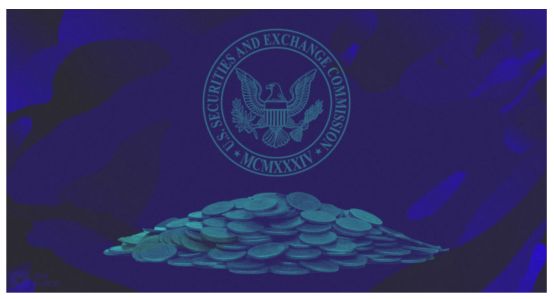Castle Island Ventures Partners' "Eight Prophecies" for 2020
Author: Nic Carter
Translation: Zoe Zhou
Source: Crypto Valley

- Year-end Special | Chain Node 2019 Annual Ice Sculpture Awards
- Science | What is the SHA256 algorithm used for Bitcoin mining?
- Survey: The average annual salary is over $ 150,000. Is the US blockchain development treatment so high?
- This article is part of The Block's 2020 Outlook series, and industry insiders and experts have expressed expectations for the coming year.
- Nic Carter is a partner at Castle Island Ventures and co-founder of Coinmetrics.io. Previously, he served as their first analyst in the crypto field at Fidelity Fidelity, pioneering his research perspective on public chains. Castle Island Ventures is a venture capital company dedicated to providing funding for public chain startups.
It's been a fun year.
We are all holding our breaths, waiting for regulatory policies to land, and still waiting for the first killer app to emerge.
We are frustrated in both respects. But the good news is that the industry is starting to realize what is really important and what is at stake.
I don't think the future will be easy. The scope of non-performing investment and speculation has not subsided to the level before the bubble burst. Whether in terms of finance or expectations, we are still experiencing deleveraging and there is still a long way to go.


Tokens continue to die

I think the US Securities and Exchange Commission (SEC) will continue to work hard to establish regulations on a previous basis.
As with Shopin, the SEC may continue to initiate criminal proceedings against issuers. This will inspire a standard template: complete abolition, fines, and permanent bans from entering the securities industry. Many issuers are waiting for the final verdict in the Kik / Kin case.
If the case is pronounced in 2020, it could immediately trigger a wave of reconciliation.
It would not be possible to start a pre-sale basic agreement from scratch. Some of the more high-profile sales activities will actively lobby regulators to find a safe haven, and these activities may even get what they want. After all, this is the most lenient supervision of the market by regulators in memory.
But fringe projects will face severe SEC oversight, as regulators are already tired of crypto products. Guess what, I think SAFT will eventually be challenged. I am not optimistic about its prospects.
As the liquidity of these assets is blocked, the pressure on the exchange will accelerate the disappearance of these assets.

Differences in mainstream trading platforms

Over the past few months, Binance, Bitfinex, and Poloniex have stopped offering trading services to US users. After the lawsuit, BitMEX may take stricter measures against US users.
As exchanges serving U.S. users try to steer clear of the daunting "Big Four" scrutiny-the US Securities and Exchange Commission (SEC), the US Commodity Futures Trading Commission (CFTC), the Financial Crimes Enforcement Network (FinCEN) and The New York Attorney General's Office (NYAG) means that the honeymoon period is over and the situation will become more difficult.
Not just Yanks. The UK has just appointed Andrew Bailey, who is skeptical of digital currencies, as Governor of the Bank of England. Over the past year, the UK's Financial Market Conduct Authority (FCA) has expressed dissatisfaction with its commitment to innovation and seems to be dissatisfied with domestic crypto products. In the European Union, January 10 will mark the start of the stringent fifth anti-money laundering directive.
These events have put heavy pressure on European digital currency exchanges. Coupled with the increasingly severe SEC attitude, by the end of 2020, the two major global capital markets may effectively ban the long-tail theory of crypto assets. Although the crypto space is a global market, capital is unevenly distributed. The massive withdrawal of users from these platforms in the United States and the European Union will put pressure on the liquidity of tokens that are specifically traded on less regulated exchanges. South Korea and Japan alone are not enough to maintain their operations.
The copycat exchange will move in various jurisdictions and hope to avoid being affected by the long-term effects of the law. Due to the unstoppable liquidity of BTC and Ethereum, they can still function, but they lack banks and fixed headquarters. This gives them unprecedented resistance to coercion.
In other words, the case of BTC-e is worth thinking about. No matter where you are, the United States has a way to find out where you are. I don't want to run any such speculative firm in 2020.

Tighter scrutiny of promoters

As ICOs became more transparent from 2014 to 2019, reviewers expanded their review scope from asset issuers to asset promoters.
From the cases before the courts, we have found that some institutions facilitate and profit from ICOs. Some class action lawsuits will expose fund companies that have made a profit by selling ICOs to retail investors. Many fund companies act as effective underwriters / issuers of these tokens, selling tokens to the public by purchasing early quotas, and exiting the public sale position. These acts may violate Article 144 legislation.
These actions have so far been generally ignored, but if the SEC begins to expand its scope of review, these subpoenas are likely to become law enforcement. Even well-known venture capital funds can be affected. Many venture capital funds are encouraging failed portfolio companies to raise non-dilutive capital from retail investors to maintain operations.
If regulators reveal the scale of these fund companies' participation in non-regular contemporary currency issuance, then these fund companies will not only lose their reputation, let alone bear potential legal consequences.

Issuance of statutory securities, not counterfeit securities

Some of the most popular assets in the past 18 months have become cash flow derivatives, meaning that the value of the token depends on the cash flow situation.
Part of the value of MakerDAO comes from the "buy-and-burn" function, which gradually shrinks the supply of assets and supplements the costs associated with the agreement.
Similarly, Binance provided an informal commitment to the owners of BNB to use part of the transaction revenue to repurchase assets. With the success of BNB, many other exchanges have also started to design their own cash flow tokens.
These exchanges performed quite well last year when "commodity" crypto assets and utility tokens were sold off, but holders began to realize that the repurchase model is not actually equivalent to a stock repurchase. Reducing the liquidity of arbitrary tokens without a clear announcement of company assets does not really constitute a return on investment for token holders. At the same time, Binance unilaterally changed the wording in the white paper to clearly define its obligations to BNB holders, a move that also reminded us of why corporate governance exists.
Issuers have traditionally been skeptical of the true cash flows injected into assets. This is due to some utopian desire to avoid securities regulation.
As I wrote in my master thesis three years ago:
The ICO is essentially a game, persuading investors to convince them that selling tokens gives them the right to use the network and profit from it, and to convince regulators that tokens do not represent securities. This behavior turned out to be undesirable.
Of course, the days of mixed regulatory action are coming to an end. Most sensible jurisdictions now prohibit the issue of counterfeit securities to retail investors. Those who are still experimenting with the token model will grit their teeth and consider issuing fiat securities.
In the United States, this will mean that the SEC will issue more legal regulations. Issuers will recognize their formal obligations to token holders. I expect that some creative regulations will be enacted.
I hope that the tokens can provide investors with specific guarantees to ensure access to the capital stack and real dividends (instead of the tedious "buy-and-burn" model), and perhaps other obligations.
If the issuer understands that what they are creating is equivalent to securities, there is much more that can be done.

Further development of Liquid and sidechain technology

As people's demand for "functional chains" decreases, people gradually realize that users and service providers will re-focus on the practical application of blockchain.
If BTC usage picks up again, the exchange is ready to respond. Many exchanges have brought together settlement platforms such as Liquid, which is more suitable for settlement between exchanges with minimal trust than Lighting.
Traders are likely to realize the advantages of Liquid. Crypto assets mean that WhaleCall cannot inform all crypto Twitter of the USDT deposit you deposited. Who likes to compete with each other? When BTC fees rose at the end of 2017, many traders and arbitrageurs used currencies such as Litecoin and Rippple as emergency channels.
By using a side chain like Liquid, traders can no longer circulate funds by transferring assets. As far as I know, there are not many people using Liquid at the moment, but if the BTC fee goes up again, it may become more meaningful. Through regular bilateral transaction settlement with side chains like Liquid, the exchange can transfer the saved fees to users.

Split transaction business

The reason why many early exchanges covered brokerage business, order matching business and custody business was because exchanges were rebuilding the financial system. Ten years after the advent of crypto, providers of such financial facilities have become more specialized. Although exchanges like Coinbase still intend to maintain vertical integration, specialization is quickly becoming the norm.
This also reflects the mature development of the equity market. Clear boundaries have emerged between brokers such as River Financial, exchanges such as Bakkt and ErisX, and custody agencies such as BitGo or Fidelity Digital Assets. It would make more sense for each platform to be responsible for its own business.

Stablecoin liquidation

Some commentators have pointed out that it is very strange that issuers of stablecoins such as USDC can persuade regulators.
I'm not a statistician, but I believe in cash and transaction privacy and are shocked by this apparent long-term regulatory loophole. Can stablecoin issuers fully understand the edge of the network and ignore the internal network? The policy so far is: Don't ask (users), don't tell (regulators).
Analyzing the supply chain doesn't help much. USDC (or USDT, TUSD, etc.) transactions do not bring metadata. So does the stablecoin issuer maintain the ability to manage these networks without having to take meaningful measures to monitor the actual use of the networks? I believe this is difficult to do. If I must guess, in 2020, FinCEN and alphabet soup institutions will start to ask some very difficult questions to stablecoin issuers.
If gray market publishers like Tether survive the battle with NYAG, they are likely to be the beneficiaries of this situation.

Emerging "real fun" blockchain games

Sometimes people say that the creators of blockchain games have forgotten the first rule of the game-the game must be fun. But few people mentioned this. Blockchain games are not a pleasing game because they must be self-reliant.
By 2020, some well-known game studios will launch some games with blockchain elements-maybe the local integrated market, or game props. These elements will seamlessly dock into the game. Users may not know that their assets are registered on-chain. A lot of professionals have already spent enough time on this topic, so the experience of these games will become very interesting.
But this does not apply to all games. Not all games deserve an open-loop market. In fact, if you add an element, most games will be affected. The game elements that are most suitable for financialization brought by the on-chain elements will become market-driven game types. The emergence of card collection games is of some significance to players who are completely accustomed to card trading.
I think some products will be successfully launched in this field next year.
to sum up
Some people may think that my prediction is too pessimistic. If this is the case, the outlook for many areas of the "cryptographic industry" is indeed quite grim. But the overall estimate is not bad
This is an unpleasant process, but it must go through.

We will continue to update Blocking; if you have any questions or suggestions, please contact us!
Was this article helpful?
93 out of 132 found this helpful
Related articles
- Hesitant fighting nations, finally to test the stablecoin!
- Officially overweight central bank digital currency (CBDC), South Korea's central bank announces the establishment of a CBDC working group
- Vitalik: The layered structure of the blockchain still has shortcomings, and layer 1 and layer 2 need to be developed in parallel in the short term
- Beijing Securities Regulatory Bureau of the China Securities Regulatory Commission: Institutions and personnel in Beijing must not promote or promote relevant virtual currency projects or platforms
- MetaMask Android app removed from Google Store, V God commented that "review has begun"
- What is the catalyst for DeFi growth and can it continue to grow in 2020? See what many insiders say
- Block.one, which had acquired voice.com, once again shot, B1.com was acquired for millions of dollars






